- Home
- H. P. Lovecraft
Bloodcurdling Tales of Horror and the Macabre Page 8
Bloodcurdling Tales of Horror and the Macabre Read online
Page 8
There’s no use in my trying to tell you what they were like, because the awful, the blasphemous horror, and the unbelievable loathsomeness and moral foetor came from simple touches quite beyond the power of words to classify. There was none of the exotic technique you see in Sidney Sime, none of the trans-Saturnian landscapes and lunar fungi that Clark Ashton Smith uses to freeze the blood. The backgrounds were mostly old churchyards, deep woods, cliffs by the sea, brick tunnels, ancient panelled rooms, or simple vaults of masonry. Copp’s Hill Burying Ground, which could not be many blocks away from this very house, was a favourite scene.
The madness and monstrosity lay in the figures in the foreground—for Pickman’s morbid art was preëminently one of daemoniac portraiture. These figures were seldom completely human, but often approached humanity in varying degree. Most of the bodies, while roughly bipedal, had a forward slumping, and a vaguely canine cast. The texture of the majority was a kind of unpleasant rubberiness. Ugh! I can see them now! Their occupations—well, don’t ask me to be too precise. They were usually feeding—I won’t say on what. They were sometimes shown in groups in cemeteries or underground passages, and often appeared to be in battle over their prey—or rather, their treasure-trove. And what damnable expressiveness Pickman sometimes gave the sightless faces of this charnel booty! Occasionally the things were shown leaping through open windows at night, or squatting on the chests of sleepers, worrying at their throats. One canvas showed a ring of them baying about a hanged witch on Gallows Hill, whose dead face held a close kinship to theirs.
But don’t get the idea that it was all this hideous business of theme and setting which struck me faint. I’m not a three-year-old kid, and I’d seen much like this before. It was the faces, Eliot, those accursed faces, that leered and slavered out of the canvas with the very breath of life! By God, man, I verily believe they were alive! That nauseous wizard had waked the fires of hell in pigment, and his brush had been a nightmare-spawning wand. Give me that decanter, Eliot!
There was one thing called “The Lesson”—Heaven pity me, that I ever saw it! Listen—can you fancy a squatting circle of nameless doglike things in a churchyard teaching a small child how to feed like themselves? The price of a changeling, I suppose—you know the old myth about how the weird people leave their spawn in cradles in exchange for the human babes they steal. Pickman was showing what happens to those stolen babes—how they grow up—and then I began to see a hideous relationship in the faces of the human and non- human figures. He was, in all his gradations of morbidity between the frankly nonhuman and the degradedly human, establishing a sardonic linkage and evolution. The dog-things were developed from mortals!
And no sooner had I wondered what he made of their own young as left with mankind in the form of changelings, than my eye caught a picture embodying that very thought. It was that of an ancient Puritan interior—a heavily beamed room with lattice windows, a settle, and clumsy seventeenth-century furniture, with the family sitting about while the father read from the Scriptures. Every face but one showed nobility and reverence, but that one reflected the mockery of the pit. It was that of a young man in years, and no doubt belonged to a supposed son of that pious father, but in essence it was the kin of the unclean things. It was their changeling—and in a spirit of supreme irony Pickman had given the features a very perceptible resemblance to his own.
By this time Pickman had lighted a lamp in an adjoining room and was politely holding open the door for me; asking me if I would care to see his “modern studies.” I hadn’t been able to give him much of my opinions—I was too speechless with fright and loathing—but I think he fully understood and felt highly complimented. And now I want to assure you again, Eliot, that I’m no mollycoddle to scream at anything which shows a bit of departure from the usual. I’m middle-aged and decently sophisticated, and I guess you saw enough of me in France to know I’m not easily knocked out. Remember, too, that I’d just about recovered my wind and gotten used to those frightful pictures which turned colonial New England into a kind of annex of hell. Well, in spite of all this, that next room forced a real scream out of me, and I had to clutch at the doorway to keep from keeling over. The other chamber had shown a pack of ghouls and witches over- running the world of our forefathers, but this one brought the horror right into our own daily life!
Gad, how that man could paint! There was a study called “Subway Accident,” in which a flock of the vile things were clambering up from some unknown catacomb through a crack in the floor of the Boylston Street subway and attacking a crowd of people on the platform. Another showed a dance on Copp’s Hill among the tombs with the background of today. Then there were any number of cellar views, with monsters creeping in through holes and rifts in the masonry and grinning as they squatted behind barrels or furnaces and waited for their first victim to descend the stairs.
One disgusting canvas seemed to depict a vast cross-section of Beacon Hill, with ant-like armies of the mephitic monsters squeezing themselves through burrows that honeycombed the ground. Dances in the modern cemeteries were freely pictured, and another conception somehow shocked me more than all the rest—a scene in an unknown vault, where scores of the beasts crowded about one who held a well-known Boston guidebook and was evidently reading aloud. All were pointing to a certain passage, and every face seemed so distorted with epileptic and reverberant laughter that I almost thought I heard the fiendish echoes. The title of the picture was, “Holmes, Lowell, and Longfellow Lie Buried in Mount Auburn.”
As I gradually steadied myself and got readjusted to this second room of deviltry and morbidity, I began to analyse some of the points in my sickening loathing. In the first place, I said to myself, these things repelled because of the utter inhumanity and callous cruelty they showed in Pickman. The fellow must be a relentless enemy of all mankind to take such glee in the torture of brain and flesh and the degradation of the mortal tenement. In the second place, they terrified because of their very greatness. Their art was the art that convinced—when we saw the pictures we saw the daemons themselves and were afraid of them. And the queer part was, that Pickman got none of his power from the use of selectiveness or bizarrerie. Nothing was blurred, distorted, or conventionalised; outlines were sharp and lifelike, and details were almost painfully defined. And the faces!
It was not any mere artist’s interpretation that we saw; it was pandaemonium itself, crystal clear in stark objectivity. That was it, by Heaven! The man was not a fantaisiste or romanticist at all—he did not even try to give us the churning, prismatic ephemera of dreams, but coldly and sardonically reflected some stable, mechanistic, and well-established horror-world which he saw fully, brilliantly, squarely, and unfalteringly. God knows what that world can have been, or where he ever glimpsed the blasphemous shapes that loped and trotted and crawled through it; but whatever the baffling source of his images, one thing was plain. Pickman was in every sense— in conception and in execution—a thorough, painstaking, and almost scientific realist.
My host was now leading the way down cellar to his actual studio, and I braced myself for some hellish effects among the unfinished canvases. As we reached the bottom of the damp stairs he turned his flashlight to a corner of the large open space at hand, revealing the circular brick curb of what was evidently a great well in the earthen floor. We walked nearer, and I saw that it must be five feet across, with walls a good foot thick and some six inches above the ground level—solid work of the seventeenth century, or I was much mistaken. That, Pickman said, was the kind of thing he had been talking about—an aperture of the network of tunnels that used to undermine the hill. I noticed idly that it did not seem to be bricked up, and that a heavy disc of wood formed the apparent cover. Thinking of the things this well must have been connected with if Pickman’s wild hints had not been mere rhetoric, I shivered slightly; then turned to follow him up a step and through a narrow door into a room of fair size, provided with a wooden floor and furnished as a studio. An acetylen
e gas outfit gave the light necessary for work.
The unfinished pictures on easels or propped against the walls were as ghastly as the finished ones upstairs, and showed the painstaking methods of the artist. Scenes were blocked out with extreme care, and pencilled guide lines told of the minute exactitude which Pickman used in getting the right perspective and proportions. The man was great—I say it even now, knowing as much as I do. A large camera on a table excited my notice, and Pickman told me that he used it in taking scenes for backgrounds, so that he might paint them from photographs in the studio instead of carting his outfit around the town for this or that view. He thought a photograph quite as good as an actual scene or model for sustained work, and declared he employed them regularly.
There was something very disturbing about the nauseous sketches and half-finished monstrosities that leered around from every side of the room, and when Pickman suddenly unveiled a huge canvas on the side away from the light I could not for my life keep back a loud scream—the second I had emitted that night. It echoed and echoed through the dim vaultings of that ancient and nitrous cellar, and I had to choke back a flood of reaction that threatened to burst out as hysterical laughter. Merciful Creator! Eliot, but I don’t know how much was real and how much was feverish fancy. It doesn’t seem to me that earth can hold a dream like that!
It was a colossal and nameless blasphemy with glaring red eyes, and it held in bony claws a thing that had been a man, gnawing at the head as a child nibbles at a stick of candy. Its position was a kind of crouch, and as one looked one felt that at any moment it might drop its present prey and seek a jucier morsel. But damn it all, it wasn’t even the fiendish subject that made it such an immortal fountain-head of all panic—not that, nor the dog face with its pointed ears, bloodshot eyes, flat nose, and drooling lips. It wasn’t the scaly claws nor the mould-caked body nor the half-hooved feet—none of these, though any one of them might well have driven an excitable man to madness.
It was the technique, Eliot—the cursed, the impious, the unnatural technique! As I am a living being, I never elsewhere saw the actual breath of life so fused into a canvas. The monster was there—it glared and gnawed and gnawed and glared—and I knew that only a suspension of Nature’s laws could ever let a man paint a thing like that without a model—without some glimpse of the nether world which no mortal unsold to the Fiend has ever had.
Pinned with a thumb-tack to a vacant part of the canvas was a piece of paper now badly curled up—probably, I thought, a photograph from which Pickman meant to paint a background as hideous as the nightmare it was to enhance. I reached out to uncurl and look at it, when suddenly I saw Pickman start as if shot. He had been listening with peculiar intensity ever since my shocked scream had waked unaccustomed echoes in the dark cellar, and now he seemed struck with a fright which, though not comparable to my own, had in it more of the physical than of the spiritual. He drew a revolver and motioned me to silence, then stepped out into the main cellar and closed the door behind him.
I think I was paralysed for an instant. Imitating Pickman’s listening, I fancied I heard a faint scurrying sound somewhere, and a series of squeals or bleats in a direction I couldn’t determine. I thought of huge rats and shuddered. Then there came a subdued sort of clatter which somehow set me all in gooseflesh—a furtive, groping kind of clatter, though I can’t attempt to convey what I mean in words. It was like heavy wood falling on stone or brick—wood on brick—what did that make me think of?
It came again, and louder. There was a vibration as if the wood had fallen farther than it had fallen before. After that followed a sharp grating noise, a shouted gibberish from Pickman, and the deafening discharge of all six chambers of a revolver, fired spectacularly as a lion-tamer might fire in the air for effect. A muffled squeal or squawk, and a thud. Then more wood and brick grating, a pause, and the opening of the door—at which I’ll confess I started violently. Pickman reappeared with his smoking weapon, cursing the bloated rats that infested the ancient well.
“The deuce knows what they eat, Thurber,” he grinned, “for those archaic tunnels touched graveyard and witch-den and sea-coast. But whatever it is, they must have run short, for they were devilish anxious to get out. Your yelling stirred them up, I fancy. Better be cautious in these old places—our rodent friends are the one drawback, though I sometimes think they’re a positive asset by way of atmosphere and colour.”
Well, Eliot, that was the end of the night’s adventure. Pickman had promised to show me the place, and Heaven knows he had done it. He led me out of that tangle of alleys in another direction, it seems, for when we sighted a lamp post we were in a half-familiar street with monotonous rows of mingled tenement blocks and old houses. Charter Street, it turned out to be, but I was too flustered to notice just where we hit it. We were too late for the elevated, and walked back downtown through Hanover Street. I remember that walk. We switched from Tremont up Beacon, and Pickman left me at the corner of Joy, where I turned off. I never spoke to him again.
Why did I drop him? Don’t be impatient. Wait till I ring for coffee. We’ve had enough of the other stuff, but I for one need something. No—it wasn’t the paintings I saw in that place; though I’ll swear they were enough to get him ostracised in nine-tenths of the homes and clubs of Boston, and I guess you won’t wonder now why I have to steer clear of subways and cellars. It was—something I found in my coat the next morning. You know, the curled-up paper tacked to that frightful canvas in the cellar; the thing I thought was a photograph of some scene he meant to use as a background for that monster. That last scare had come while I was reaching to uncurl it, and it seems I had vacantly crumpled it into my pocket. But here’s the coffee—take it black, Eliot, if you’re wise.
Yes, that paper was the reason I dropped Pickman; Richard Upton Pickman, the greatest artist I have ever known—and the foulest being that ever leaped the bounds of life into the pits of myth and madness. Eliot—old Reid was right. He wasn’t strictly human. Either he was born in strange shadow, or he’d found a way to unlock the forbidden gate. It’s all the same now, for he’s gone—back into the fabulous darkness he loved to haunt. Here, let’s have the chandelier going.
Don’t ask me to explain or even conjecture about what I burned. Don’t ask me, either, what lay behind that mole-like scrambling Pickman was so keen to pass off as rats. There are secrets, you know, which might have come down from old Salem times, and Cotton Mather tells even stranger things. You know how damned lifelike Pickman’s paintings were—how we all wondered where he got those faces.
Well—that paper wasn’t a photograph of any background, after all. What is showed was simply the monstrous being he was painting on that awful canvas. It was the model he was using—and its background was merely the wall of the cellar studio in minute detail. But by God, Eliot, it was a photograph from life.
In The Vault
There is nothing more absurd, as I view it, than that conventional association of the homely and the wholesome which seems to pervade the psychology of the multitude. Mention a bucolic Yankee setting, a bungling and thick-fibered village undertaker, and a careless mishap in a tomb, and no average reader can be brought to expect more than a hearty albeit grotesque phase of comedy. God knows, though, that the prosy tale which George Birch’s death permits me to tell has in it aspects beside which some of our darkest tragedies are light.
Birch acquired a limitation and changed his business in 1881, yet never discussed the case when he could avoid it. Neither did his old physician, Doctor Davis, who died years ago. It was generally stated that the affliction and shock were results of an unlucky slip whereby Birch had locked himself for nine hours in the receiving-tomb of Peck Valley Cemetery, escaping only by crude and disastrous mechanical means; but while this much was undoubtedly true, there were other and blacker things which the man used to whisper to me in his drunken delirium toward the last. He confided in me because I was his doctor, and because he probably felt the need of c
onfiding in some one else after Davis died. He was a bachelor, wholly without relatives.
Birch, before 1881, had been the village undertaker of Peck Valley, and was a very calloused and primitive specimen even as such specimens go. The practises I heard attributed to him would be unbelievable today, at least in a city; and even Peck Valley would have shuddered a bit had it known the easy ethics of its mortuary artist in such matters as the ownership of costly “laying-out” apparel invisible beneath the casket’s lid, and the degrees of dignity to be maintained in posing and adapting the unseen members of lifeless tenants to containers not always calculated with sublimest accuracy. Most distinctly Birch was lax, insensitive, and professionally undesirable; yet I still think he was not an evil man. He was merely crass of fiber and function—thoughtless, careless, and liquorish, as his easily avoidable accident proves, and without that modicum of imagination which holds the average citizen within certain limits fixed by taste.
Just where to begin Birch’s story I can hardly decide, since I am no practised teller of tales. I suppose one should start in the cold December of 1880, when the ground froze and the cemetery delvers found they could dig no more graves till spring. Fortunately the village was small and the death rate low, so that it was possible to give all of Birch’s inanimate charges a temporary haven in the single antiquated receiving-tomb. The undertaker grew doubly lethargic in the bitter weather, and seemed to outdo even himself in carelessness. Never did he knock together flimsier and ungainlier caskets, nor disregard more flagrantly the needs of the rusty lock on the tomb door which he slammed open and shut with such nonchalant abandon.
At last the spring thaw came, and graves were laboriously prepared for the nine silent harvests of the grim reaper which waited in the tomb. Birch, though dreading the bother of removal and interment, began his task of transference one disagreeable April morning, but ceased before noon because of a heavy rain that seemed to irritate his horse, after having laid but one body to its permanent rest. That was Darius Peck, the nonagenarian, whose grave was not far from the tomb. Birch decided that he would begin the next day with little old Matthew Fenner, whose grave was also near by; but actually postponed the matter for three days, not getting to work until Good Friday, the fifteenth. Being without superstition, he did not heed the day at all; though ever afterward he refused to do anything of importance on that fateful sixth day of the week. Certainly, the events of that evening greatly changed George Birch.

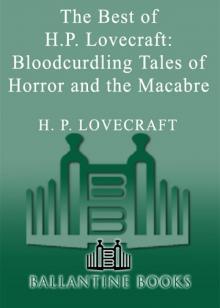 The Best of H.P. Lovecraft
The Best of H.P. Lovecraft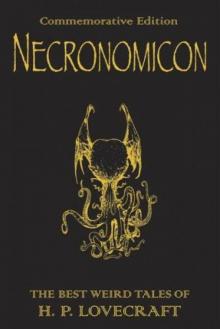 The Definitive H.P. Lovecraft: 67 Tales Of Horror In One Volume
The Definitive H.P. Lovecraft: 67 Tales Of Horror In One Volume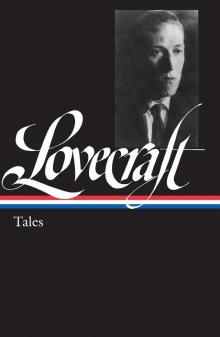 The Complete Works of H.P. Lovecraft
The Complete Works of H.P. Lovecraft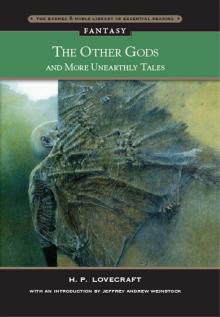 Other Gods and More Unearthly Tales
Other Gods and More Unearthly Tales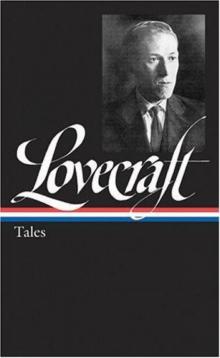 Lovecraft's Fiction Volume I, 1905-1925
Lovecraft's Fiction Volume I, 1905-1925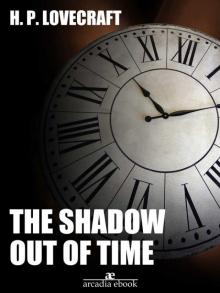 The Shadow Out of Time
The Shadow Out of Time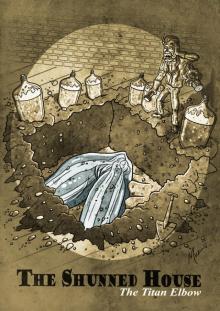 The Shunned House
The Shunned House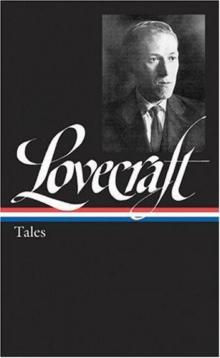 Lovecraft's Fiction Volume II, 1926-1928
Lovecraft's Fiction Volume II, 1926-1928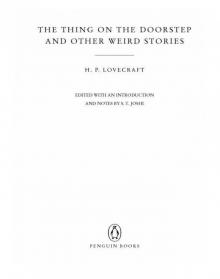 The Thing on the Doorstep and Other Weird Stories
The Thing on the Doorstep and Other Weird Stories Dream Cycle of H. P. Lovecraft: Dreams of Terror and Death
Dream Cycle of H. P. Lovecraft: Dreams of Terror and Death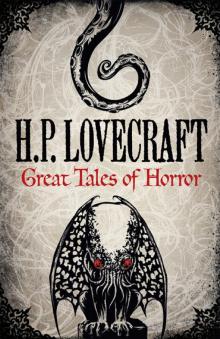 Great Tales of Horror
Great Tales of Horror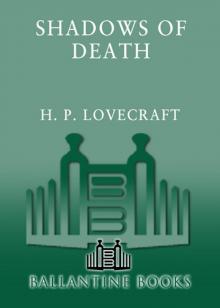 Shadows of Death
Shadows of Death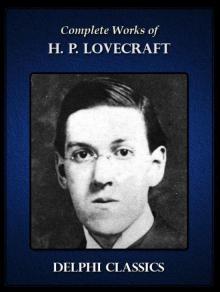 Delphi Complete Works of H. P. Lovecraft (Illustrated)
Delphi Complete Works of H. P. Lovecraft (Illustrated)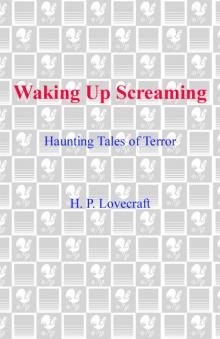 Waking Up Screaming: Haunting Tales of Terror
Waking Up Screaming: Haunting Tales of Terror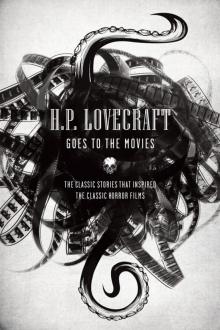 H.P. Lovecraft Goes to the Movies
H.P. Lovecraft Goes to the Movies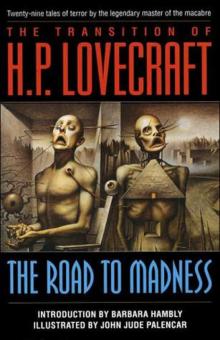 The Road to Madness
The Road to Madness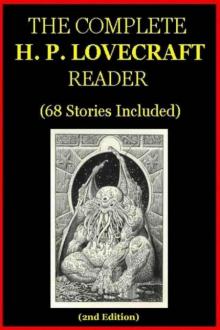 The Complete H.P. Lovecraft Reader (68 Stories)
The Complete H.P. Lovecraft Reader (68 Stories) The Horror in the Museum
The Horror in the Museum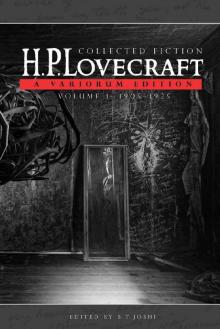 Collected Fiction Volume 1 (1905-1925): A Variorum Edition
Collected Fiction Volume 1 (1905-1925): A Variorum Edition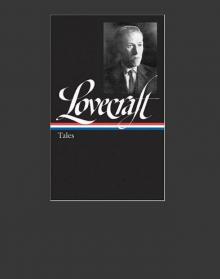 Lovecrafts_Fiction, vol.I_1905-1925
Lovecrafts_Fiction, vol.I_1905-1925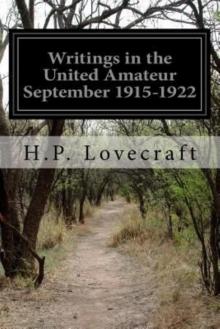 Writings in the United Amateur, 1915-1922
Writings in the United Amateur, 1915-1922 H.P. Lovecraft: The Complete Works
H.P. Lovecraft: The Complete Works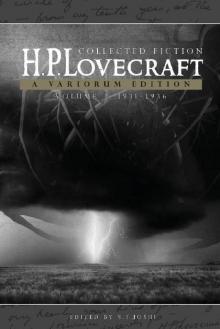 Collected Fiction Volume 3 (1931-1936): A Variorum Edition
Collected Fiction Volume 3 (1931-1936): A Variorum Edition H.P. Lovecraft: The Complete Fiction
H.P. Lovecraft: The Complete Fiction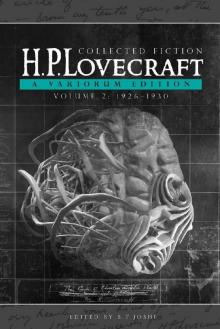 Collected Fiction Volume 2 (1926-1930): A Variorum Edition
Collected Fiction Volume 2 (1926-1930): A Variorum Edition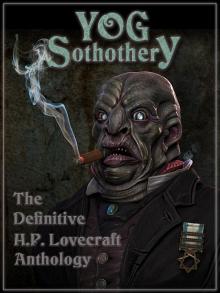 Yog Sothothery - The Definitive H.P. Lovecraft Anthology
Yog Sothothery - The Definitive H.P. Lovecraft Anthology The Complete H.P. Lovecraft Collection (Xist Classics)
The Complete H.P. Lovecraft Collection (Xist Classics)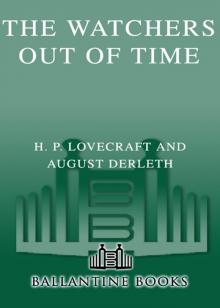 The Watchers Out of Time
The Watchers Out of Time Eldritch Tales
Eldritch Tales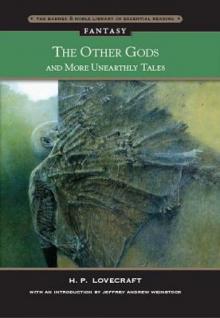 The Other Gods And More Unearthly Tales
The Other Gods And More Unearthly Tales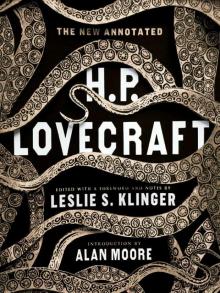 The New Annotated H. P. Lovecraft
The New Annotated H. P. Lovecraft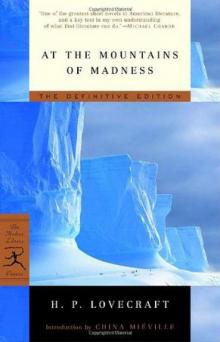 At the mountains of madness
At the mountains of madness Bloodcurdling Tales of Horror and the Macabre
Bloodcurdling Tales of Horror and the Macabre Fossil Lake II: The Refossiling
Fossil Lake II: The Refossiling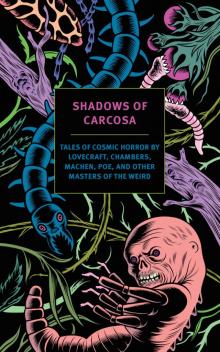 Shadows of Carcosa: Tales of Cosmic Horror by Lovecraft, Chambers, Machen, Poe, and Other Masters of the Weird
Shadows of Carcosa: Tales of Cosmic Horror by Lovecraft, Chambers, Machen, Poe, and Other Masters of the Weird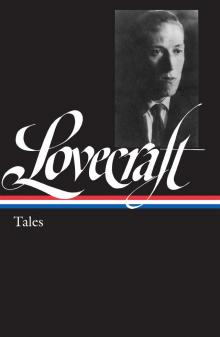 H. P. Lovecraft
H. P. Lovecraft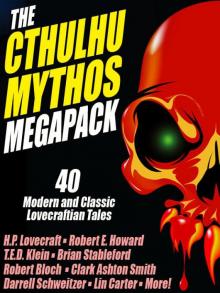 The Cthulhu Mythos Megapack
The Cthulhu Mythos Megapack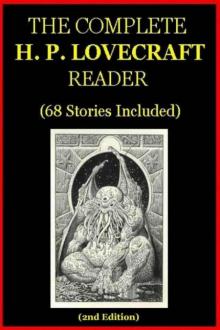 The Complete H. P. Lovecraft Reader (2nd Edition)
The Complete H. P. Lovecraft Reader (2nd Edition) The Complete Fiction
The Complete Fiction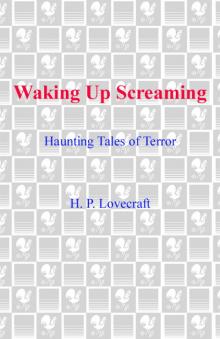 Waking Up Screaming
Waking Up Screaming Transition of H. P. Lovecraft
Transition of H. P. Lovecraft![[1935] The Shadow Out of Time Read online](http://i1.bookreadfree.com/i2/04/12/1935_the_shadow_out_of_time_preview.jpg) [1935] The Shadow Out of Time
[1935] The Shadow Out of Time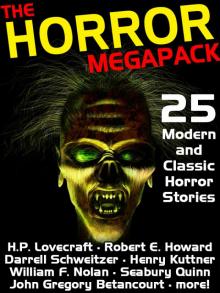 The Horror Megapack
The Horror Megapack